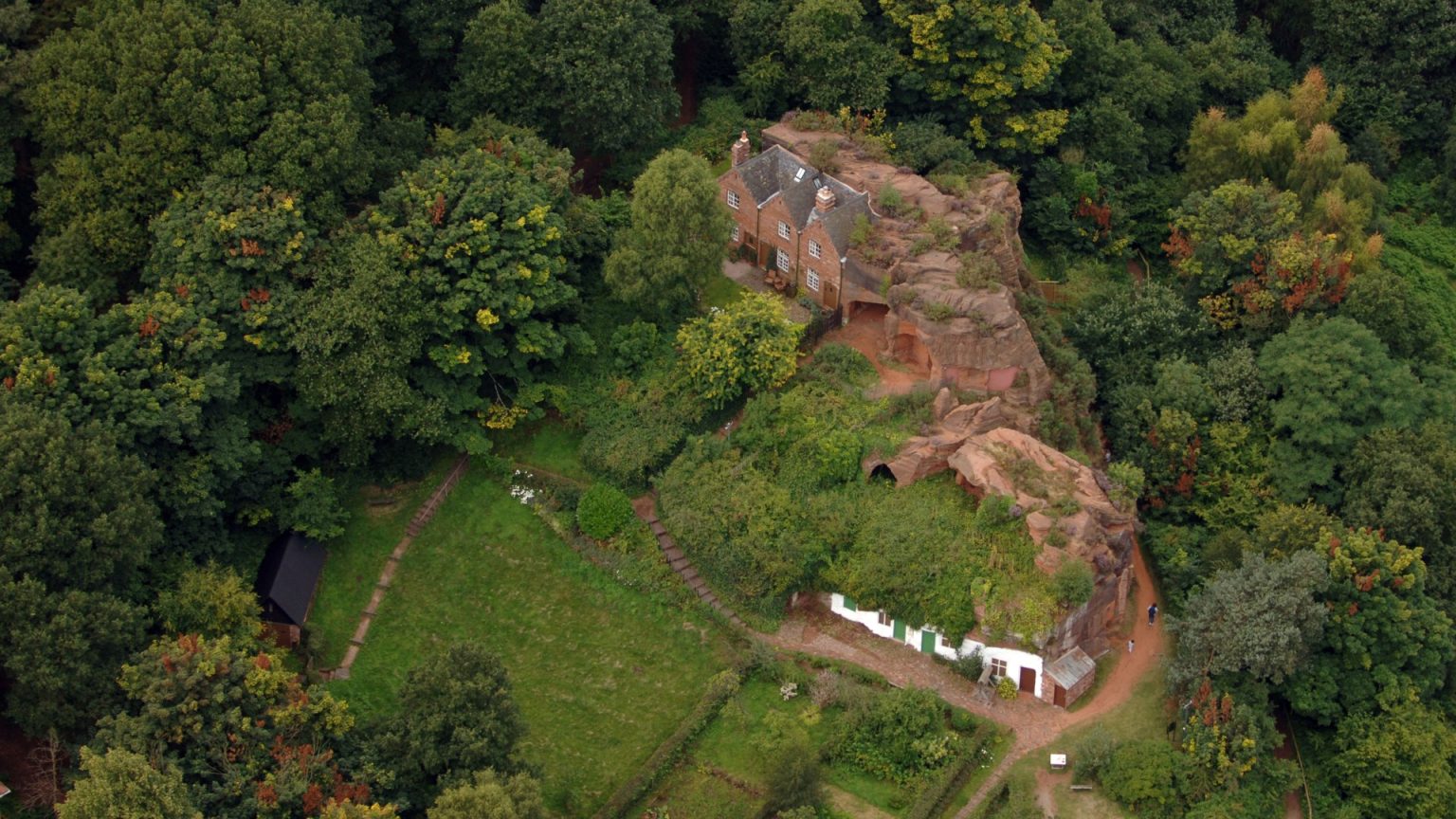The Holy Austin Rock Houses, nestled within the sandstone cliffs of Kinver Edge in the West Midlands of England, offer a captivating glimpse into a bygone era. These unique dwellings, carved directly into the rock face, served as homes for generations of families, from the 18th century right up until the 1960s. This remarkable longevity makes them a tangible link to England’s cave-dwelling past, a testament to human adaptability and resourcefulness. While the earliest recorded inhabitation dates back to 1777, with an account of a traveler seeking shelter from a storm, experts believe their history extends much further, possibly even to the Iron Age, given the presence of a hill fort atop Kinver Edge. The rock houses represent a continuous thread of human habitation woven through centuries, a narrative etched into the very stone itself.
Today, the Holy Austin Rock Houses are preserved by the National Trust, offering visitors a unique opportunity to step back in time. Restoration efforts in the 1990s, particularly focusing on the home of Mr. and Mrs. Fletcher, have meticulously recreated the atmosphere of early 20th-century life within these cave dwellings. Based on photographs and personal recollections, the furnishings, ornaments, and everyday objects paint a vivid picture of domestic life within the sandstone walls. This careful reconstruction allows visitors to not just observe, but to almost experience the unique environment these families called home, complete with its challenges and comforts. While lacking modern conveniences like electricity, these homes possessed a unique charm, boasting larger rooms and higher ceilings than nearby cottages.
The experience of visiting Holy Austin Rock Houses extends beyond the restored dwellings. While the main focus of preservation efforts has been on the Fletcher home, other caves, such as Nanny’s Rock and Vale’s Rock, remain largely untouched, allowing visitors to explore their raw, un-renovated interiors. These less-developed caves provide a sense of the original state of the rock houses, offering a contrasting perspective to the curated experience of the restored Fletcher home. They stand as silent witnesses to the passage of time and the enduring presence of human life within this unique landscape. The contrast between the restored and unrestored caves provides a multi-faceted understanding of the site’s history.
The wider landscape of Kinver Edge complements the historical significance of the rock houses. Dramatic countryside views, meandering walking trails, and serene woodlands offer visitors the opportunity to immerse themselves in the natural beauty that enveloped the cave dwellers for generations. The surrounding environment provides context to their lives, demonstrating the interconnectedness between human habitation and the natural world. Located just a short walk from the picturesque Kinver Village, the rock houses are easily accessible, making them a perfect destination for a day trip from nearby cities like Birmingham and Kidderminster. This accessibility encourages visitors to explore not only the historical site but also the charming local community.
Beyond the tangible experience of exploring the houses and their surroundings, the Holy Austin Rock Houses evoke a sense of wonder and contemplation. They prompt reflection on the lives lived within these unconventional dwellings, the challenges faced, and the ingenuity employed to create a home within the embrace of the earth. They stand as a testament to human resilience and adaptability, a reminder that home can take many forms. The visitor reviews, consistently positive and filled with praise for the site’s uniqueness and the knowledgeable staff, further underscore the profound impact these rock houses have on those who experience them. The blend of historical significance, natural beauty, and educational value makes Kinver Edge a truly special destination.
The Holy Austin Rock Houses are not an isolated example of cave dwellings in the UK. Other sites, such as Gaping Gill in Yorkshire, Painshill in Surrey, and Carnglaze Caverns in Cornwall, offer further opportunities to explore the fascinating world of subterranean spaces. These sites, each unique in their formation and history, showcase the diverse ways humans have interacted with the underground environment. Gaping Gill, a natural cavern accessible by a dramatic winch descent, offers a thrilling adventure. Painshill features a stunning man-made crystal grotto, a testament to human artistry and imagination. Carnglaze Caverns, once a working mine, provides a glimpse into the industrial heritage of the region. These diverse sites highlight the myriad ways caves have captivated human interest, from providing shelter and resources to inspiring awe and wonder.











